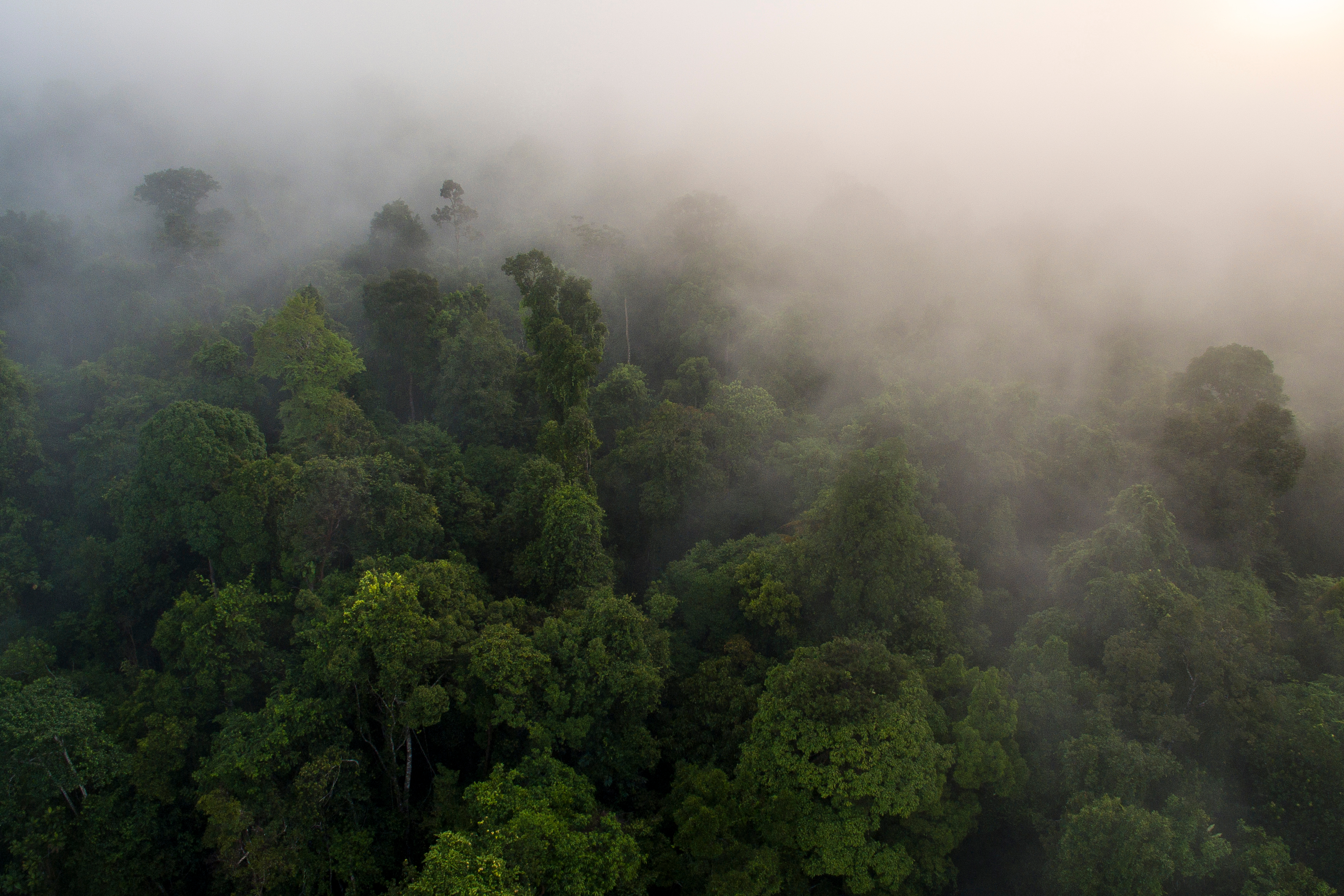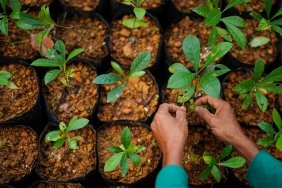TERMITE COLONIES IN TROPICAL FORESTS
By: Diah R. Sulistiowati
Try to enter the forest once in a while, then close your eyes, what do you feel? Try to let all your senses work. Trace your sense of smell, feel the sensation, surely the smell of wet soil will creep through the recesses of the sense of smell, continue to the sensory nerves, finally your brain will conclude it is a typical tropical forest soil smell. When you enter the forest, your sense of taste will make sure you smell distinctive aromas such as the smell of wood and soil. The scent comes from the trees and soil, and the small insects of termites give rise to the distinctive aroma of the tropical forest. But the procession is directly and indirectly assisted by termites.
In Indonesia, which is a tropical area that has the largest forest in the world, termite insects play an important role as decomposers in these tropical forests, they nest in the soil, especially near organic matter containing cellulose such as wood, litter and humus, termite species are included in the "recycling" group because they can decompose dead substances into something that is actually very beneficial for the survival of life in a forest ecosystem.
It seems so simple, we can imagine what the forest would be without termites, the forest would be filled with piles of leaves (litter) and the result could be the death of its inhabitants, namely other large animals because they cannot move, this is one of the roles of insects to benefit the animals in the forest, even trees can live because the leaves underneath have decomposed properly.
Only by breaking down leaves (litter) and allowing other animals to live comfortably, they are tasked with cleaning up leaf litter and fallen wood in the forest, the results of these leaves and wood are extracted into humus making tropical forest soil fertile. They are primary consumers in the food chain that plays a role in the continuity of the life cycle in the forest and produces several important elements such as carbon and nitrogen.
The termites also naturally help shape the process of the groundwater cycle in the forest by making passages or soil cavities, so that rainwater falls into the soil, because of the help of termites, rainwater in the forest reacts naturally and enters the soil, so that groundwater can be distributed to forest plants and there is groundwater storage.
According to insect experts Collin 1983, Wood and Sand 1978, said that termites are the most important species of antrophods as decomposers in tropical forest ecosystems, it is stated that the number of termite species with the biomass they produce and their diversity and feeding ability are closely related to soil quality in tropical forests, with the diversity of their food, especially soil and wood, providing an effective key to high biodiversity forests.
Migration Attack
When the forest is degraded the forest changes function, even the smallest animals such as termite species adapt to their environment, they used to eat litter and tree wood and change their diet, they will eat concrete, building wood to household furniture and even termites invade agricultural land by destroying agricultural soil,
It can be said that the breaking power exceeds that of elephants, as it is known that elephants only attack farmers' houses in villages on the edge of the forest, but try to imagine how devastating termite attacks in villages and urban areas are slowly built but very destructive, with termite colonies able to penetrate the soil surface and even termites to reach their target wood, they can penetrate walls that are several cm thick, attack buildings, causing many economic losses. Termite colonies in the soil can number from hundreds of thousands to millions of termites, slowly but devastatingly attacking and harming humans.
There are not many effective ways to prevent and control them, because the longer termites are left in the environment, the more likely they are to cause damage, Termites are always associated with "Home and Building Destroyers" their presence is very disturbing and with their community movements can collapse parts of a house or building,
Indonesia is a disaster-prone country on the Ring of Fire prone to earthquakes, so the stability of buildings and houses will be more easily destroyed and the added factor of termite attacks which indirectly play a role in damaging wood and concrete structures and buildings and making buildings and houses porous.
Forests are the natural home of termites, hundreds of termite species process in forests, with the rampant deforestation and various types of forest clearing in Indonesia, termites have adapted, migrating to cities, their function used to be very good for the ecosystem as forest decomposers has now changed. The wood used in the city sourced from the forest is again targeted by termites, where there is wood there are termites.
According to Soedjito (1998), natural forests are more stable and resistant to external disturbances than single species plantations, as well as resistant to fire, disease and insect pests, with the existence of diverse species, allowing a lot of fauna to live in it. Some bird species are predators of destructive insects, so even if a pest attack occurs, it does not spread quickly.
The termites will continue to destroy, termites continue to build nests in cities and villages, they can live in poles, ceilings and walls of houses as well as under the soil of people's agricultural land, all of which will be destroyed, actually termites only eat wood and soil with certain content, by nature termites will always attack because of wood and soil < br />
decomposer) in the forest and with the existence of forests also certainly does not harm our society, the important role of Indonesia's tropical forests cannot be seen in just one factor, namely Economics, but the role of Indonesia's Tropical forests is multi-functional and complex, Forest clearing will have a negative impact on the surrounding environment, the role of Indonesia's forests is to protect humans from disasters that will be caused.





